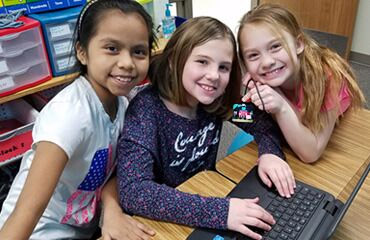Students acquire a greater range of Python skills, and apply them to hands-on projects for the micro:bit physical computing platform.
Students review prior Python coding skills, including input and output commands, control statements, variables and data types, and function declarations. During the first half of the year students build new skills, including string and array manipulation as well as more advanced control statements. Students apply these new skills by developing a secret message encoder/decoder and a working restaurant menu app. Later in the year, students explore physical computing by writing Python code to control micro:bits, small but sophisticated computers that interact with the physical world. Students program their micro:bits to sound an alarm when they detect movement, to send wireless messages via Bluetooth radio, and to display custom animation sequences. Students combine these skills for their final coding project, an interactive video game.



